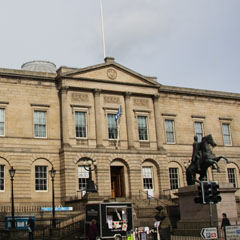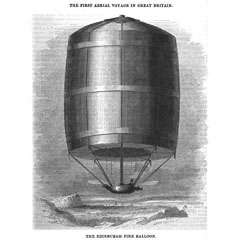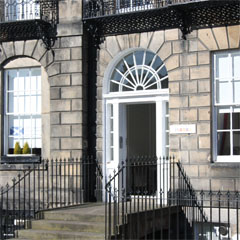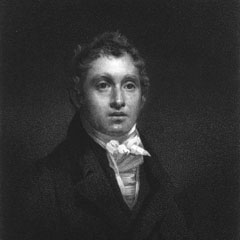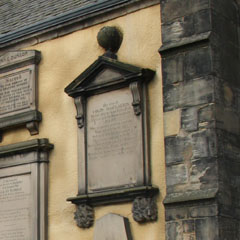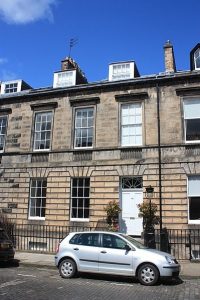
53 Northumberland Street (© Stephen C Dickson via Wikimedia Commons)
53 Northumberland Street, Edinburgh, EH3 6JQ; marked with a blue plaque
Mary Sommerville (1780-1872) is often described as the “queen of science in the 19th Century.” A writer and polymath, she wrote the ground-breaking interdisciplinary book On the Connexion of the Physical Sciences (1834), combining the latest scientific advances in astronomy, physics, chemistry, botany, and geology. Though she wrote extensively on a variety of subjects and was the first person referenced as a “scientist” (in a review of her work in 1834), it is her contribution to Astronomy that is particularly notable: Mary Sommerville was one of the first people to propose the existence of planet Neptune. She was also one of the first two women to be elected members of the Royal Astronomical Society (1835) and co-signatory of John Stuart Mill’s 1866 petition to Parliament to give women the right to vote. Born in Jedburgh in the Borders and growing up in Burntisland, Fife, Mary Somerville lived at 53 Northumberland Street between 1813-16.
Find out more
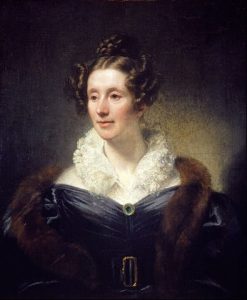
Portrait of Mary Sommerville by Thomas Philips (Wikimedia Commons)
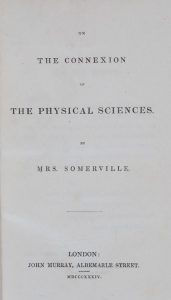
Cover page of The Connexion (1834)

